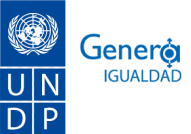The global record on gender equality remains mixed with progress on many fronts, but gaps remaining in others. The 2015 Human Development Report ‘Work for Human Development’, twenty years after the issue was first addressed in 1995 Human Development Report, testifies to this fact.
By Selim Jahan and Tanni Mukhopadhyay
Photographer: Anastasiya Kasyanova. Photo courtesy of Undp in Uzbekistan
The global record on gender equality remains mixed with progress on many fronts, but gaps remaining in others. The 2015 Human Development Report ‘Work for Human Development’, twenty years after the issue was first addressed in 1995 Human Development Report, testifies to this fact.
Progress has been made on many important counts (e.g. on primary education, political participation), as well as inertia and stagnation on others (e.g. employment, health). In the public domain, women are now represented in far greater numbers today than before – whether in elected office, or in the executive or judiciary. They have entered streams of work that were traditionally considered male bastions – breaking many stereotypes and expectations.
When we look at global experience, education and employment emerge as two critical drivers for women’s empowerment in the public and the private domains. Efforts towards those twin objectives –improving educational attainments and workforce participation through a mix of female-friendly policies, quotas, and affirmative interventions – while leading to better performance on several counts, have not fully yielded the desired social transformation towards gender equality.
Yet, these changes have not shifted some persistent gender inequalities and gaps. Even though women carry out the major share of global work, they face disadvantages, both in paid and unpaid work. In the waged work place: their workforce participation levels have stagnated at 50 percent compared to male employment at 77 percent. Women’s engagement in the labour force is one such domain with very limited transformation. Women are overrepresented in segregated sectors (like agriculture), in roles and tasks that build on gender stereotypes (e.g. paid domestic work and care work) and in the more informal forms of employment. Analyses of total hours worked in time-use surveys shows that women contribute 52 percent of global work to men’s 48 percent (1).
Women also earn 24 percent less than men globally. The professional ‘glass ceiling’ means that women still hold only 22 percent of senior leadership jobs in businesses, and 25 percent and less of senior political and judicial positions. Women encounter greater barriers when accessing finance as entrepreneurs; legal restrictions and discriminatory practices regarding property rights and assets; and have unequal access to and use of technology. A pregnancy, on average, costs a female employee two years in terms of career progress, and breaks in earnings impact their financial future through lost pension contributions.
The burden of care also remains unequally shared between men and women through largely conventional caregiving roles:
– Women shoulder 75 percent of the unpaid workload in households
– Currently, the care burden for the world’s approximately 2 billion children, over 120 million elderly aged 80+ years, almost 1 billion people with disabilities and about 37 million people living with HIV-AIDS – falls disproportionately on female caregivers. Care needs are likely to grow as populations age.
– 83 percent of the 53 million paid domestic workers are female.
As the 2015 HDR stresses, gender imbalances in paid and unpaid work partly explain why countries and societies have not been more successful in achieving gender equality. And unless public and workplace policies ungently address these disparities and there is a change in attitudes and behaviors towards women in the labor force, the gap between women and men is could increase, even if progress is made for women.
Childcare and eldercare responsibilities significantly constrain a caregiver’s time and ability to undertake in waged employment, and the prohibitive cost for replacement services effectively force individuals to drop out from the workplace. Improved provision of basic services and infrastructure to reduce the burden of unpaid care can free up women’s time for paid work.
Alleviating the time burden on workers, both men and women, is also critical: this can start with employers creating enabling working environments. Supportive interventions and norm shifts could enable people to better balance their workplace responsibilities and their household roles, towards r a fairer distribution of the workload between women and men. Family policies that do not reinforce gender stereotypes are needed: e.g. parental leave policies (i.e. maternity leave, and mandatory paternal leave) can shift the gendered roles at work and home.
Equipping women and girls with relevant education and training, including in science technology engineering and mathematics is critical for the transition to a fairer world of work. Globalization, digital technologies and new ways of working are also ushering in new notions of men’s and women’s work, and enables access to work that lets people apply their creativity and potential. Engaging in this new world of work puts a high premium on workers with skills and qualifications in science and technology. Women remain vastly underrepresented in these technical subjects at the secondary and tertiary education levels and in the overall technical workforce. Addressing this gap can, on the one hand, spur innovation and growth to benefit the economy; and on the other, unleash the twin drivers of education and employment to empower women and a latent human potential.
Poised as we are, at the start of this 2016 Annual Session of the Commission on the Status of Women, we hope that policymakers, educationists and employers reinvigorate our collective, informed efforts towards this universal goal of gender equality.
Selim Jahan is the Director of the Human Development Report Office at UNDP and the lead author of the 2015 Human Development Report ‘Work for Human Development.’
Tanni Mukhopadhyay is a Policy Specialist and Senior Researcher at the the Human Development Report Office at UNDP .
Photo credit: UNDP Uzbekistan / Anastasiya Kasyanova
References
(1) This survey covers 63 countries and 69 percent of global adult population.
The HDialogue blog is a platform for debate and discussion. Posts reflect the views of respective authors in their individual capacities and not the views of UNDP/HDRO.
HDRO encourages reflections on the HDialogue contributions. The office posts comments that supports a constructive dialogue on policy options for advancing human development and are formulated respectful of other, potentially differing views. The office reserves the right to contain contributions that appear divisive.
Este artículo fue publicado originalmente en HDR

